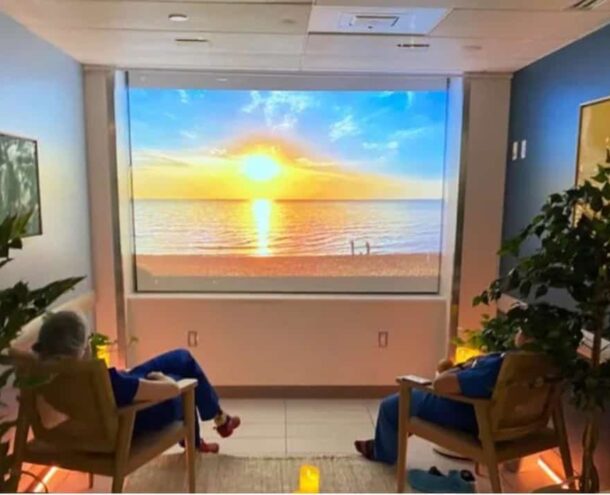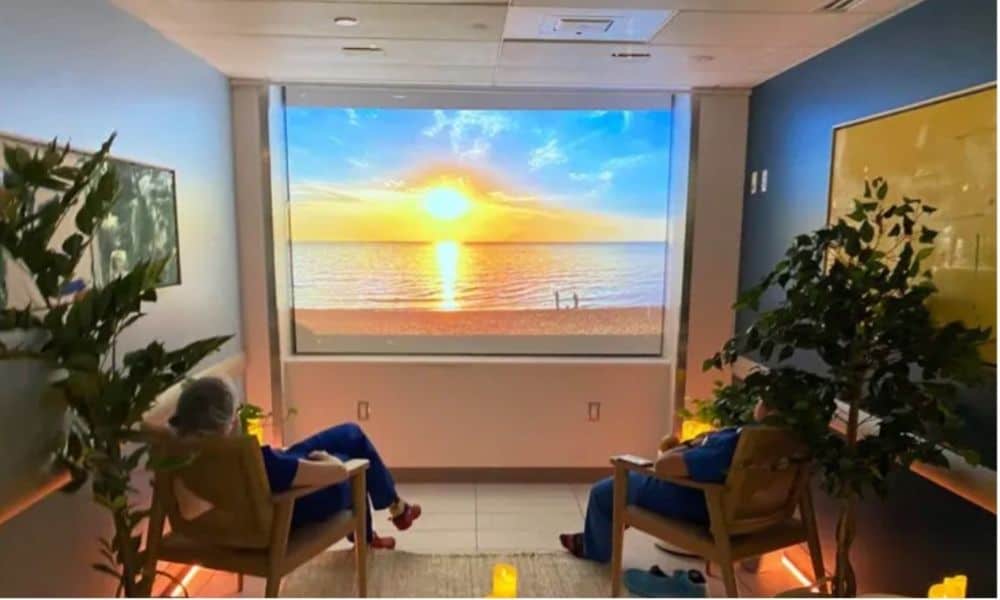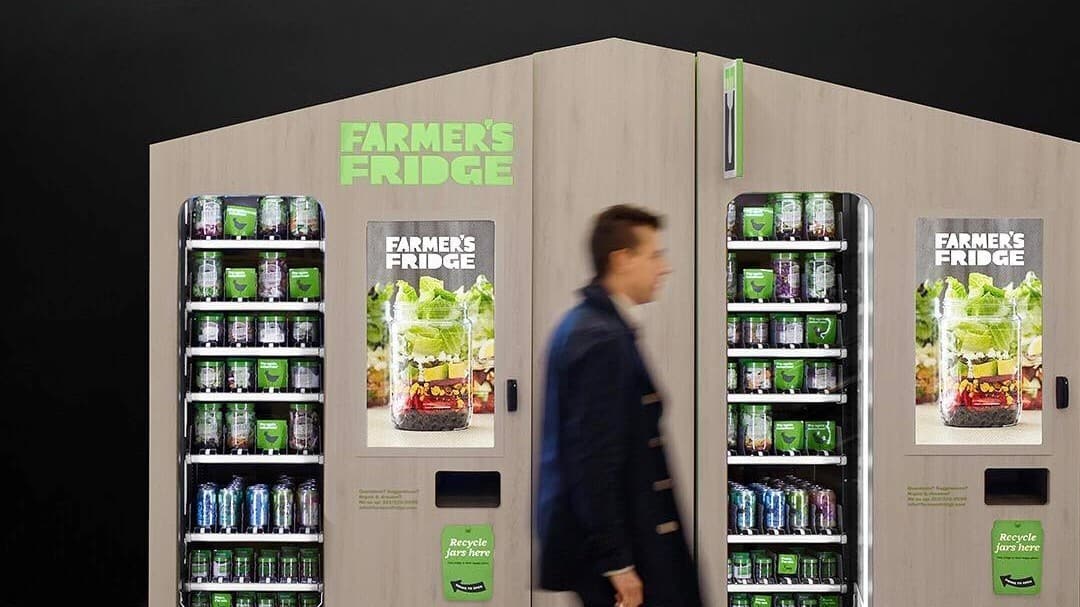The chain reaction that starts with employee happiness in healthcare

The future of healthcare depends on improved employee experience. Along with listening, rewarding, and empowering – it’s time to invest in enhancing employee spaces.
Employee experience: An essential component for customer satisfaction
It is widely known that customer satisfaction increases loyalty—leading to higher retention rates, more referrals, and, consequently, better business results. It’s why so many enterprises are committed to improving on this metric. And typically, they strive to do so through actions aimed squarely at consumers and clients themselves—like implementing stronger service standards, reducing prices, and developing customer centric experiences.
But there’s another less direct, but no less effective way for companies to drive customer satisfaction: by first focusing on their employees. Because when organizations invest in, listen to, and support their workforce, their people ultimately pass on their own positive experiences to customers. In fact, a 2020 Forbes Insights report found that companies that were dedicated to enhancing employee engagement saw 1.8 times more revenue growth than their counterparts who focused exclusively on customers. And findings published in The Harvard Business Review observed that employee-focused firms “had more than four times the average profit and more than two times the average revenue” compared with other businesses.
Evident across industries
This effect exists across industries. In retail, for instance, Zappos rejects traditional management practices in favor of a system that allows its individual team members to make critical decisions. This sense of employee ownership—along with a slew of other perks—enables “Zapponians,” as the company calls its staff, to feel more fulfilled. And that, in turn, empowers them to go the extra mile for customers—whether it’s by offering free, expedited shipping, or sending a personal thank you note to customers who’ve had complaints.
In the hospitality sphere, Hilton “serves our people the way we want them serving our guests,” according to EVP and Chief Commercial Officer Chris Silcock. For example, Hilton enables its employees to enjoy programs that are similar to the ones it offers customers—like Go Hilton, which gives them access to discounted rates at company properties. Policies and benefits like this help avoid turnover among personnel—creating a happier team, which results in better customer service.

How healthcare compares
While organizations across sectors are leaning into this employee-centric approach, those in the healthcare arena tend to lag behind.
Ironically, a field that’s dedicated to promoting the wellbeing of its customers is failing with its own employees. According to a KFF/Washington Post survey from 2021, a whopping 55 percent of frontline healthcare workers reported feeling “burned out” at work. Long hours, work-life imbalance, salary cuts, and, of course, the global pandemic have all contributed to this feeling—with 62 percent saying they experienced COVID-19-related stress and worry in the same poll. At Monigle, our own qualitative research echoed many of these sentiments, with interviewees expressing anxiety, exhaustion, and frustration—often to a point where it affected their performance with patients.
Reframing challenges as opportunities
However, while most healthcare brands do under-deliver for their employees today, a few are actually ahead of the curve—implementing simple, employee-focused practices, which raise morale, advance the patient experience, and serve as a guide for their peers. Here’s how they do it:
Listen deeply
Massachusetts General Hospital put the power of listening to work when it implemented multiple suggestions from its staff to solve pandemic-related issues. From addressing personal protective equipment shortages to repurposing additional space as units filled up: applying these employee ideas wasn’t just a resourceful response to a crisis. It also was a strategic move to “acknowledge the staff’s expertise and what they’re going through,” according to Ali Raja, EVP of Emergency Medicine. Doing so increased workers’ sense of agency in their jobs and ensured they felt appreciated—leading them to create better patient experiences.
Cater to the individual
To address high turnover in its system, Inova Healthcare designed an assessment that placed nursing candidates into an ideal environment based on their personalities—with more nurturing nurses assigned to the ER and more analytical ones in operating rooms. By considering the type of setting its employees would thrive in most, Inova made its nurses feel more comfortable and content, enabling them to offer better care.
Reward and recognize
A simple “thank you” can go a long way—no matter if it’s a handwritten card, an extra day of PTO, or something more. For the employees of Trinity Health’s 92 hospitals and 113 continuing care facilities, this gratitude arrived in the form of a $500 appreciation award. This monetary acknowledgment helped Trinity’s team feel valued and more enthusiastic —the effects of which translate to customers down the line.
How can space support employee-centric initiatives?
Space is a fundamental part of the employee experience—especially in an industry like healthcare, where most staff members in a clinical setting must work on site. And when designed deliberately and intentionally, space can be transformed from an everyday amenity into a true value-add for employees: becoming a benefit in its own right.
Revolutionizing employee support through recharge rooms
Mount Sinai Hospital is one of the healthcare trailblazers rethinking its space in smart ways. During the pandemic, Mount Sinai converted underused areas near ICUs into recharge rooms to support its employees, many of whom were experiencing intense levels of stress. These rooms apply biophilic design principles to bring elements of nature into a normally sterile environment—giving workers a much-needed respite from the ongoing pressure of their jobs. With dim lighting, projections of natural landscapes, and soothing music, these spaces serve as a calm, comforting refuge for employees. And with touchless voice-activated measures and sanitizing protocols, the rooms protect employees’ physical wellbeing just as much as their mental health. The results? A Frontiers in Psychology study showed that just 15 minutes in a recharge room could reduce stress by up to 60 percent.

Out-of-category inspiration
Using space to promote employee satisfaction is still a relatively new concept, especially in the healthcare arena. But as this approach gains traction, the field can look to out-of-category examples for inspiration.
What else could hospital systems do with their space to help employees? Beyond building recharge rooms, hospitals may consider revamping breakrooms—many of which often resemble institutional-feeling cafeterias—by taking a page from high-design hotel lobbies instead. Set up to feel like a large living room, New York’s citizenM hotel lobby features distinct areas where people can convene together or relax alone. With an inviting aesthetic that features floor-to-ceiling bookshelves, a robust collection of art, a full bar, and furniture that ranges from couches for lounging to desks for working, the citizenM lobby serves as the heart of the building and creates opportunities for connection—something that employees value most about being in a physical workplace.

Giving employees access to space-based services can make them feel more appreciated and more incentivized, too. That might be through bringing in brands like Peloton to create small exercise areas for workers who don’t have time to get to the gym during their hectic days. Partnerships with companies like Farmer’s Fridge could also offer employees healthier, more convenient meals through the installation of vending machines filled with fresh, ready-to-eat options in high-traffic locations. Augmenting an existing environment with added services can reshape it into something entirely new and exciting for employees.

A chain reaction
It’s a fact: when employees are satisfied it creates a chain reaction—leading to better service for customers and better outcomes for businesses. Nowhere is this more essential than in healthcare. In this age of uncertainty, it is crucial to ensure that your nurses, doctors, and staff feel cared for, so they are empowered to deliver that same attention, kindness, and empathy to patients.
When you are considering how to heighten the employee experience, be sure to listen to and empower your employees, and address a myriad of channels—including the use of revitalized employee spaces and services. As time goes on, we anticipate that this environment-focused approach will become a powerful movement that helps organizations that embrace it—and their employees and customers—flourish.
Curious to learn more? Reach out to us, we’d love to spark a conversation!



